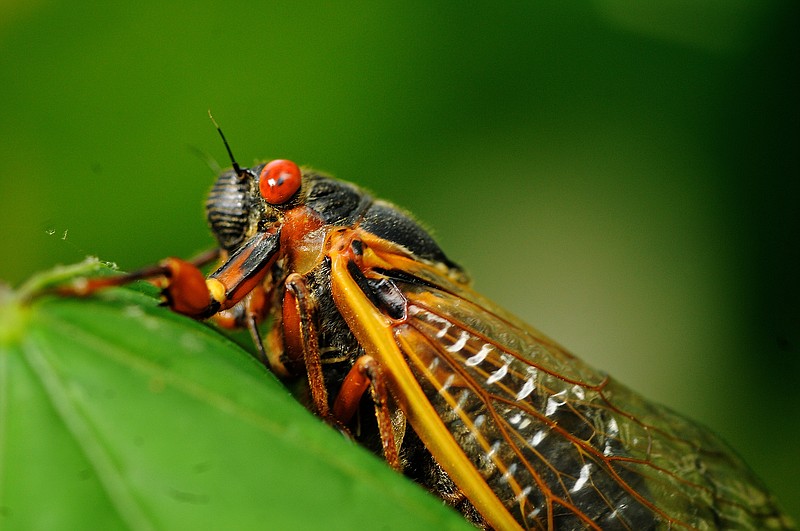COLUMBUS, Ohio (AP) - The 17-year cicadas are coming again, millions of them, with their unnerving red eyes, orange wings and cacophonous mating song that can drown out the noise of passing jet planes.
For those who have an aversion to prawn-size, flying bugs, the next six weeks or so will be like a long horror-movie scene in large swaths of Ohio and West Virginia and slivers of Pennsylvania, Virginia and Maryland.
In reality, though, cicadas are harmless and actually good for the environment. Their egg-laying in the trees is a natural pruning that results in increased growth, their burrowing aerates the ground, and their decaying bodies add nutrients to the soil.
Some other facts about them, compliments of Jim Fredericks, chief entomologist with the National Pest Management Association, and Gene Kritsky, a cicada expert at Cincinnati's College of Mount St. Joseph, who's predicting the insects will start appearing in the next few days:
___
LIVE LONG AND BURROW
When the soil warms up enough, cicadas emerge from the ground, where they've been sucking moisture from tree roots for the past 17 years. They'll shed their exoskeletons, attach themselves to branches, mate and lay eggs before dying off in about six weeks. The hatched nymphs then will drop off the trees and burrow underground to live for another 17 years.
___
SONG OF THE CICADA
Amorous males attract mates by rapidly vibrating drumlike tymbals on either side of their abdomen to produce sound. When millions of them are doing it at once, the din is deafening. Kritsky and other researchers who have measured the decibel level say it can be louder than a rock concert.
___
MMM, HORS D'OEUVRES
The plump creatures make for tasty treats for dogs and cats, "like Hershey's Kisses falling from the sky," as Kritsky says. Gobbling them up won't hurt pets, unless they consume too many. Full of protein, gluten-free, low-fat and low-carb, cicadas were used as a food source by American Indians and are still eaten by humans in many countries, including China, where they are served deep-fried.
Kritsky says raw cicadas taste like cold canned asparagus. Whenever he goes on the road to study them, he always brings one back as a snack for his cat, Boudie.
___
IT'S JUST OUR TURN
There are 15 groups - or broods - of cicadas that are on life cycles of either 13 or 17 years. They appear mostly in the eastern and central parts of the U.S. Last spring, it was a brood in parts of Texas, Oklahoma, Missouri, Kansas, Nebraska and Iowa that had its coming out. This particular brood, which hasn't appeared since 1999, will be seen in the eastern half of Ohio, the northern two-thirds of West Virginia, the southwestern corner of Pennsylvania, and tiny sections of Virginia and Maryland.
___
DON'T CALL THEM LOCUSTS
Humans have been tracking cicada appearances for hundreds of years in the United States. English colonists, who thought they were experiencing biblical plagues, started referring to them as locusts, a mischaracterization that has managed to stick around. (Locusts are actually grasshoppers.) One major difference is that cicadas don't swarm; the males just independently bumble from one place to another looking for sex.
___
'THEY WON'T CARRY AWAY CHILDREN'
Besides making a bunch of noise, clumsily flying into windshields and littering the land with zillions of their gross little carcasses, cicadas are relatively harmless to living things, although Fredericks warns they could do some damage to very young trees. (To protect saplings, cover them with netting while the cicadas are visiting.) There have been reports of them causing traffic accidents by flying through open car windows and distracting drivers, and they once clogged up the building air conditioning system at a hospital, but usually they don't leave behind devastating damage.
"They don't bite, they don't sting, they won't carry away children, they're not poisonous," Kritsky notes. Adds Fredericks: "It really is just an opportunity to get out and enjoy the show nature is putting on for you."
___
Follow Mitch Stacy on Twitter at http://www.twitter.com/mitchstacy
